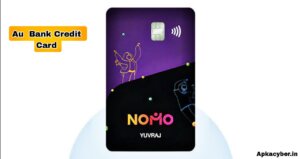
1. Introduction to Au Bank Credit Cards
Au Bank, known formally as au Jibun Bank, is one of Japan’s prominent internet-native banks, launched by the telecommunications giant KDDI in partnership with MUFG Bank. Since its debut, the bank has sought to redefine retail banking by focusing on digital services, integrating telecommunication perks, and offering cashless conveniences. Central to that mission are its signature credit cards, which blend technology, rewards, and functionality to appeal to a growing base of digitally savvy customers.
This article delves deeply into Au Bank credit cards, covering:
-
Historical background
-
The Au Jibun Bank credit card lineup
-
Reward programs and benefits
-
Fees, interest rates, and eligibility
-
Application process
-
Digital services & mobile integration
-
Comparative positioning
-
Optimal customer usage cases
-
Regulatory and environmental aspects
-
Observations on future trends
Our goal: To provide a thorough understanding of Au Bank credit cards in today’s financial ecosystem.
2. Historical Background
2.1 Origins of Au Jibun Bank
Au Jibun Bank launched in late 2017, a joint project between KDDI and MUFG, targeting a seamless blend of banking + digital communications. The initiative tapped into KDDI’s telecom familiarity, appealing to smartphone-heavy demographics interested in financial services that lived fully online.
2.2 Expansion Into Credit Card Services
While debuting as a deposit and lending service, Au Jibun Bank quickly recognized the opportunity in credit cards. By early 2018, the bank announced a roadmap for unveiling credit card options to complement core banking, aiming to deliver integrated experiences: card issuance, funds transfer, balance checks, all within one digital ecosystem.
3. Au Bank Credit Card Lineup
Au Bank offers several credit card variants tailored to distinct needs. Though branding evolves, typical options today include:
3.1 au WALLET Credit Card (Visa/Mastercard)
-
Overview: A standard Visa or Mastercard issued directly by Au Jibun Bank.
-
Target Audience: Everyday purchasers, travelers, digital shoppers.
-
Key Features:
-
Broad merchant acceptance (国内 & 海外)
-
Points accrual at ~1% (1 point = ¥1)
-
Contactless payment (Visa Touch, Mastercard Tap)
-
Linkage to au WALLET prepaid accounts
-
3.2 au WALLET Prime Gold Card
-
Overview: A premium mid‑tier card for more frequent users.
-
Upgrade Highlights:
-
Higher points earn rate (~1.2–1.5%)
-
Added perks like travel insurance and airport lounge access
-
Some rebate programs or concierge services
-
3.3 Co‑Branded or Promotional Cards
Syndications between Au Bank and corporate partners (e.g., retail, travel, telecom) offer special promotional rates, point bonuses, and merchant-specific perks. These cards often come in collaboration with KDDI or consumer service platforms.
4. Rewards Programs & Benefits
4.1 au WALLET Points
-
Structure: But 1 point equals 1 yen. Redemption options span shopping, AU services, bill credits, or bank deposits.
-
Standard Rate: ~1.0% for common purchases.
-
Promotional Boosts: Select categories (通信料, 電子マネー, etc.) can earn up to 5% during campaign periods.
4.2 Lifestyle & Travel Perks
-
Travel Insurance: Premium gold versions include overseas accident coverage, cancellation insurance, and purchase protection.
-
Airport Lounge Access: Limited to certain gold variants or added by annual fee.
-
Mobile/Transport Bonuses: Extra rewards when paying au bills, using PiTaPa, Suica, or PASMO.
-
Exclusive Discounts: Access to promotions with partners—e.g., discounted movie tickets, retail coupons.
4.3 Integration with au PAY and au PAY Market
Customers often earn extra points when using au cards within au’s digital wallets or marketplaces.
4.4 Contactless & Mobile Payments
Embedded NFC for tap-and-go purchases in stores, and full compatibility with Apple Pay, Google Pay, and KDDI’s “au PAY” mobile wallet.
5. Fees, Interest Rates, & Eligibility
5.1 Annual Fees
-
Standard Card: Typically free for au mobile subscribers, else ~¥1,250+tax.
-
Gold Cards: Generally ~¥10,000+tax, though waivers exist based on annual spend or subscriber loyalty.
5.2 Interest (Revolving Credit & Cash Advances)
-
Revolving Rates: ~15–18% APR, consistent with typical Japanese card offerings.
-
Cash Advances: Slightly higher rates (e.g., 18% APR) with upfront fees.
5.3 Eligibility Criteria
-
Age: Applicants must be aged 18+ (dual nationals need to be 20+).
-
Residency: Japanese nationality or valid Japanese visa.
-
Credit Score: Stable income, good credit record, and au subscriber status often strengthen approval chances.

6. Application Process & Required Documentation
6.1 How to Apply
-
Visit the Au Jibun Bank’s mobile app or website.
-
Select desired card variant.
-
Input personal data: address, income, au ID, etc.
-
Upload supporting documents via camera (IDs, pay slips).
-
Bank performs credit check (~1–3 business days).
-
Once approved, digital card available immediately; physical card in mail within 1–2 weeks.
6.2 Digital Card & Instant Use
Customers can link the digital version to mobile wallets and start using it virtually before the physical card arrives—a big advantage for e‑commerce and travel.
7. Digital Integration & Mobile Features
7.1 au Jibun Bank App
-
Unified home for monitoring balances, points, bills, and repayments.
-
Manage settings: PIN changes, lost/stolen reports, transaction alerts.
7.2 au PAY Wallet
-
Add Au Bank cards, store passes, coupons.
-
Supports QR‑code and NFC payments at partnered stores.
-
Points earned from card usage auto‑stored and trackable.
7.3 Monthly Statement Analytics
Visual expense breakdowns (categories like food, transportation) appear in the app, aiding budgeting.
7.4 Security Infrastructure
-
Real‑time fraud alerts, 3D Secure for online purchases, dynamic CVV or tokenization.
-
Lock/unlock feature via app for quick security control.

8. How Au Bank Stacks Up Against Competitors
8.1 Peer Comparison (Rakuten, JCB, MUFG, Visa)
| Feature | Au Bank Card | Rakuten Card | JCB Card |
|---|---|---|---|
| Rewards Rate | ~1% + promos | ~1% + category boosts | 0.5–1.0% |
| Annual Fee | Free for au users; modest | Always free | Mixed (many free, some fee) |
| Mobile Wallet Integration | Excellent (au ecosystem) | Good (Rakuten Pay) | Moderate – limits with Apple Pay |
| Travel Benefits | Gold variant only | No-standard | Premium cards may offer travel perks |
| Approval Likelihood | Good for au users | Broad approval | Varies |
8.2 Strengths of Au Bank Cards
-
Excellent for au mobile subscribers (fee waivers + bonus points).
-
Premium digital experience with integrated channel use.
-
Strong travel and security perks at higher tiers.
8.3 Weaknesses
-
Gold cards carry higher fees.
-
Limited brand/mileage partner network vs. international rivals.
-
Foreign transaction fees could be high (~1.6–2.0%) for travel.
9. Optimal Use Cases for Au Bank Cards
9.1 For au Mobile Subscribers
Use your credit card to pay monthly phone bills and indirectly boost tiers for rewards and fee waivers.
9.2 For Frequent Digital Shoppers
Extra points earned via au PAY Market, au Shopping Mall, etc., yield significant savings.
9.3 For Travelers
Gold cardholders benefit from travel insurance and lounge access; contactless cards work globally.
9.4 For Security-Conscious Users
Instant digital issuance, spend alerts, and app-based locking increase control.
10. Costs & Fees: What You Should Know
10.1 Annual Fee Summary
-
Basic Variant:
-
au subscriber: ¥0
-
Non-au: ~¥1,250 + tax
-
-
Gold Variant: ¥10,000 + tax, often offset via spend credits.
10.2 Interest and Late Fees
-
Revolving APR: ~15–18%
-
Cash Advance: ~18% + fee per draw
-
Late Payment: ~¥5,000 + interest charges
10.3 Foreign Transaction Fee
~1.6–2.0% per overseas purchase—fairly standard but relevant for travel budget planning.
11. Application Best Practices & Tips
-
Apply with au subscription to waive fees and get better approval odds.
-
Use the digital card promptly for early perks.
-
Track spending categories via the app to maximize point-earning offers.
-
Plan card upgrades carefully—estimate if Gold benefits outweigh annual fees.
-
Manage payments: opt for full payment monthly to avoid interest.
12. Environmental & Regulatory Aspects
12.1 Consumer Protections
Au Bank adheres to Japanese credit regulations, including transparent disclosures, revolving cap limits, and responsible lending obligations.
12.2 Eco-Conscious Initiatives
Digital-first issuance minimizes plastic use. Some cards may be linked to carbon-offset programs or recyclable materials in tiers.
13. Future Trends & Evolution
-
More app-based lending tools: real-time loan limits, instant top-ups.
-
Deeper KDDI ecosystem synergies: bundling with telecom, entertainment, IoT platforms.
-
Expanded international presence: accelerated support for overseas payment wallets, travel features.
-
Flexible tokenized card issuance: dynamic virtual cards for subscriptions, one-time use, or heightened online security.
14. Summary & Final Thoughts
Au Bank credit cards offer a compelling mix of rewards, digital-native convenience, and security, especially for KDDI (au) subscribers. While standard annual and foreign fees apply, perks such as instant digital issuance, integration with au wallets, and premium-level benefits make them competitive against mainstream Japanese issuers. Upgrading to a Gold variant may be worthwhile for frequent travelers or high spenders, while basic cards suffice for routine purchases and good value with minimal cost.
15. Quick FAQs
Q1: Can I use Au Bank credit cards internationally?
Yes—as Visa or Mastercard, they’re accepted globally. Just monitor FX fees and notify the bank before extended trips.
Q2: Do Au Bank credit cards come with contactless payment?
Absolutely. All Au WALLET variants support tap-and-go via NFC, Apple Pay, Google Pay, etc.
Q3: Can I manage repayments via the app?
Yes, you can set up automatic bank withdrawals, make instant payments, lock/unlock cards, and track due dates.
Q4: Is the au WALLET Points program worthwhile?
For solo au bills + digital shoppers earning 1–2% and leveraging promotional offers, yes—especially if you redeem within the au ecosystem. For occasional card users, alternative issuer cards might offer more generic value.
Q5: What documentation is needed?
Typical documents include a government ID (driver’s license, My Number card), proof of address, au ID login, and income statements (for higher tiers).

Conclusion
Au Bank’s credit cards bridge modern digitization with reliable financial services. From cost-conscious everyday users to travel-ready premium holders, the choices accommodate a variety of needs. Integration within the au digital ecosystem and strong app-based tools make them a compelling option for anyone seeking convenience, rewards, and control in one easy-to-use package.
Let me know if you’d like deeper breakdowns—such as point value optimization, point-of-sale deals, travel insurance terms, or real-world user reviews and comparisons!
